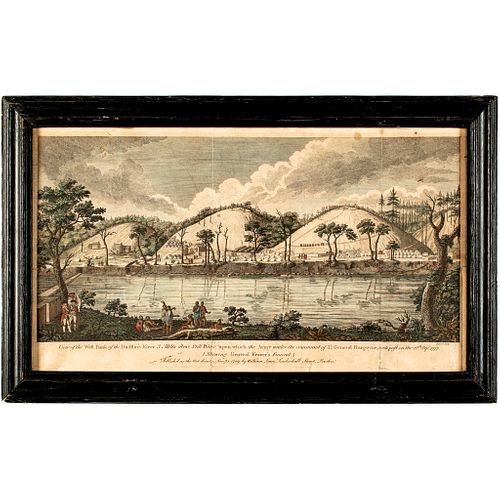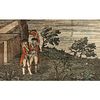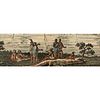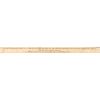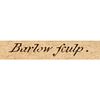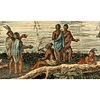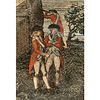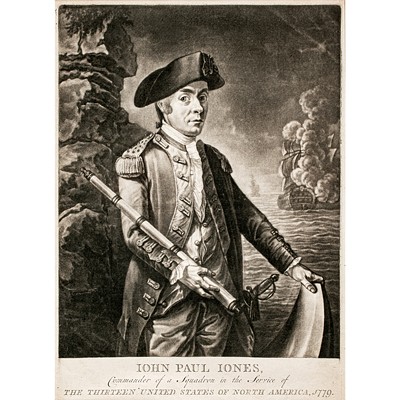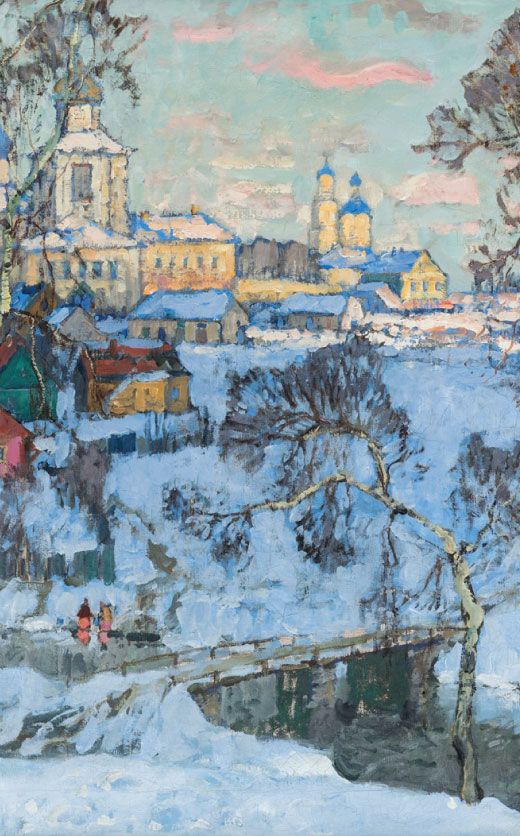1789 Print: View of the West Bank of the Hudson River 3 Miles Above Still Water,
Lot 114
Categories
Estimate:
$1,500 - $2,000
Absentee vs Live bid
Two ways to bid:
- Leave a max absentee bid and the platform will bid on your behalf up to your maximum bid during the live auction.
- Bid live during the auction and your bids will be submitted real-time to the auctioneer.
Bid Increments
| Price | Bid Increment |
|---|---|
| $0 | $10 |
| $200 | $20 |
| $300 | $25 |
| $500 | $50 |
| $1,000 | $100 |
| $2,000 | $200 |
| $3,000 | $250 |
| $5,000 | $500 |
| $10,000 | $1,000 |
| $20,000 | $2,000 |
| $30,000 | $2,500 |
| $50,000 | $5,000 |
| $100,000 | $10,000 |
| $200,000 | $20,000 |
| $300,000 | $25,000 |
| $500,000 | $50,000 |
About Auction
By Early American History Auctions
Jan 23, 2021
Set Reminder
2021-01-23 12:00:00
2021-01-23 12:00:00
America/New_York
Bidsquare
Bidsquare : Early American History Auction of Autographs, Americana, Political & Maps
https://www.bidsquare.com/auctions/early-american-history-auctions/early-american-history-auction-of-autographs-americana-political-maps-6311
311 Lots of Rare, Historic Autographs, Americana, Civil War Era, George Washington, Abraham Lincoln, Slavery & Black History, Revolutionary War Era, Colonial America, Federal Period, War of 1812, Colonial Currency, Indian Peace Medals & more... Early American History Auctions auctions@earlyamerican.com
311 Lots of Rare, Historic Autographs, Americana, Civil War Era, George Washington, Abraham Lincoln, Slavery & Black History, Revolutionary War Era, Colonial America, Federal Period, War of 1812, Colonial Currency, Indian Peace Medals & more... Early American History Auctions auctions@earlyamerican.com
- Lot Description
American Revolution
1789-Dated Hand-Colored Engraving "View of the West Bank of the Hudson River 3 Miles Above Still Water, Upon Which The Army Under the Command of Lt. General Burgoyne Took Post on the 20th September 1777 (Showing General Frazer's Funeral)"
1789-Dated Post Revolutionary War Federal Era, Hand-Colored Engraved Print, "View of the West Bank of the Hudson River 3 Miles Above Still Water, Upon Which The Army Under the Command of Lt. General Burgoyne Took Post on the 20th September 1777 (Showing General Frazer's Funeral)", engraved by Barlow, "Published as the Act directs, Jan(uar)y 1, 1789 by William Lane, Leadenhall Street, London.," Framed, Very Fine.
An impressive view of British General Burgoyne's encampment along the Hudson River, published shortly after the end of the American Revolution. A fascinating view of Burgogne's men encamped on one side of the Hudson, with Native Americans on the other, the day after Burgogne and his British soldiers defeated the Americans. This visually impressive Print measures 7.75" x 16" (by the image), 9" x 16.5" (by sight), and it has been professionally mounted under UV-protective glass in an old black wood frame to anb overall size of 18.75" x 11.75". The scene consists of four bare mounds in the background, in front of which is General Burgoyne's encampment. In the foreground are some British soldiers and a small band of American Indians on the bank of the flowing Hudson River. A pontoon bridge spans the river. One of the American Indians is smoking a peace pipe. This print was engraved by Barlow and published on January 1, 1798 by William Lane of London -- long after Burgoyne had surrendered at Saratoga. Perhaps this was an affectionate nod to happier times.
According to the title of this print, this would have been the scene from the period of Burgoyne's encampment after he had prevailed in the Battle of Freeman's Farm (the first Battle of Saratoga), and after the Battle of Bemis Heights (the second Battle of Saratoga), where General Simon Fraser was mortally wounded on October 7, 1777. His funeral was held the next day in accordance with Fraser's last wishes. Once the Revolutionary forces understood that a funeral was being held on the redoubt, the cannonade was withheld in honor of the General. This battle also marked the beginning of the end for General Burgoyne, who eventually surrendered his 6,000 man British army to the Americans on October 17th, marking an important turning point in the American Revolution.
This is a decidedly rare and visually impressive print. The print itself is in good condition, though it has four vertical folds, some soiling, a few spots at upper edge, and a few closed edge tears, three of which touch the text, but do not affect legibility; the print is laid down. The colors are soft blue, green, gray, and white, punctuated by the red coats of the British soldiers and some of the Indians' blankets. A similar, not colored example of this engraving is located in the Yale University Art Gallery, New Haven, Connecticut. Our current engraving has nice eye appeal and is a highly desirable Revolutionary War era print, framed and ready to hang on display.
The Battles of Saratoga (September 19 and October 7, 1777) marked the climax of the Saratoga campaign, giving a decisive victory to the Americans over the British in the American Revolutionary War.
British General John Burgoyne led a large invasion army southward from Canada in the Champlain Valley, hoping to meet a similar British force marching northward from New York City and another British force marching eastward from Lake Ontario; the southern and western forces never arrived, and Burgoyne was surrounded by American forces in upstate New York. He fought two small battles to break out which took place 18 days apart on the same ground, 9 miles (14 km) south of Saratoga, New York. They both failed.
Burgoyne found himself trapped by superior American forces with no relief, so he retreated to Saratoga (now Schuylerville) and surrendered his entire army there on October 17. His surrender, says historian Edmund Morgan, "was a great turning point of the war because it won for Americans the foreign assistance which was the last element needed for victory."
Burgoyne's strategy to divide New England from the southern colonies had started well but slowed due to logistical problems. He won a small tactical victory over General Horatio Gates and the Continental Army in the September 19 Battle of Freeman's Farm at the cost of significant casualties. His gains were erased when he again attacked the Americans in the October 7th Battle of Bemis Heights and the Americans captured a portion of the British defenses.
Burgoyne was therefore compelled to retreat, and his army was surrounded by the much larger American force at Saratoga, forcing him to surrender on October 17. News of Burgoyne's surrender was instrumental in formally bringing France into the war as an American ally, although it had previously given supplies, ammunition, and guns, notably the de Valliere cannon which played an important role in Saratoga.
The battle on September 19 began when Burgoyne moved some of his troops in an attempt to flank the entrenched American position on Bemis Heights. Benedict Arnold anticipated the maneuver and placed significant forces in his way. Burgoyne did gain control of Freeman's Farm, but it came at the cost of significant casualties. Skirmishing continued in the days following the battle, while Burgoyne waited in the hope that reinforcements would arrive from New York City. Patriot militia forces continued to arrive, meanwhile, swelling the size of the American army. Disputes within the American camp led Gates to strip Arnold of his command.
British General Sir Henry Clinton moved up from New York City and attempted to divert American attention by capturing Forts Clinton and Montgomery in the Hudson River highlands on October 6, but his efforts were too late to help Burgoyne. Burgoyne attacked Bemis Heights again on October 7 after it became apparent that he would not receive relieving aid in time.
This battle culminated in heavy fighting marked by Arnold's spirited rallying of the American troops. Burgoyne's forces were thrown back to the positions that they held before the September 19 battle, and the Americans captured a portion of the entrenched British defenses.
- Shipping Info
-
Early American provides in-house worldwide shipping. Please contact us directly if you have questions about your specific shipping requirements.
-
- Buyer's Premium



 EUR
EUR CAD
CAD AUD
AUD GBP
GBP MXN
MXN HKD
HKD CNY
CNY MYR
MYR SEK
SEK SGD
SGD CHF
CHF THB
THB